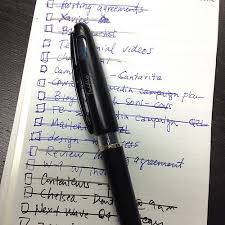If your life is anything like mine, the number of things to do in a day far outweighs the number of hours available to complete them. Whether it’s going grocery shopping, prepping notes for a lesson, doing the dishes, or the countless other random tasks that inevitably arise, there seems to be a never-ending stream of things to do.
Indeed, many of us face an overabundance of activity and a deficit of unstructured down time. This poses several problems for the way we think about and practice mindfulness. This is the first in a series of articles on how to meet these challenges.
The first and most obvious question here is, “Where do I find the time?” In a world of endless activity, how are we to fit one more thing into a day that’s already bursting at the seams?
A Primary Challenge
I want to acknowledge that this can be hard! It is one of the primary challenges for modern mindfulness practitioners. Perhaps even more so for educators who work long hours and often take home stacks of papers to grade and lessons to prepare.
Making mindfulness practice a priority is an important first step; and understanding its value is an essential ingredient in doing that. We make time for what’s important. Do you sleep, shower and eat every day? What would your life be like if you stopped doing any of those?
Yet how many of us regularly take the time to clear our mind, settle our heart, and deeply connect with what we value? To actually examine the inner mechanisms of the mind and heart that are at play behind the scenes, driving our actions, shaping our words, coloring our opinions and perceptions? After all, the very experience of being busy, of having “too much to do,” is a perception created in the mind! (We’re only ever right here, doing one thing, one moment at a time).

Our heart and mind are the primary interface for our lives, the “master lens,” if you will, through which all experience is filtered. When we recognize this, taking time to look inward and clean it off starts to feel a little more important than just a few minutes of mindful breathing to relax!
We can support this recognition by scheduling a regular time each day to practice, and making a firm commitment to follow through. This sort of structure is invaluable. The social and cultural pressures to just keep going are strong. Without creating a routine and calling forth some inner resolve, it’s easy just to be carried along by the currents of our life.
A third and indispensable aid is having a community with whom to practice. If you’re fortunate enough to live near a local mindfulness center or other people who practice, I encourage you to take advantage of this! It’s amazing how much energy and strength can be gained by practicing together, not to mention having the opportunity to clarify and deepen our understanding of the practice. More and more, there are also on-line groups and classes that can provide similar support. (If you’ve taken any of our courses, you have access to a growing number of such resources.)

So you’re clear on your priorities, you’ve got a routine, and you’ve committed to it. Enter that nagging voice: “But I have SO much work to do…!” The refrain is so familiar, so convincing – so true. There are two other tricks I’ve learned to overthrow the tyranny of the to-do list. Yes, sometimes the list still gets the better of me, but these two perspectives are powerful antidotes to counter its spell.
The first is a utilitarian one: reminding ourselves that taking time for mindfulness practice usually helps us get things done. It can strengthen mental clarity, heighten focus, and expand our creativity – all of which tends to make us more efficient.
Just as a field requires fallow time to replenish its soil, just as a woodcutter must stop to sharpen their axe, so too our minds need the deep nourishment of quiet, mindful presence. When we sit to practice, we step out of the world of doing. In that stopping, the mind and body are refreshed. And that, in turn, sharpens our axe.

The second antidote is more radical. It involves facing the truth that we’ll never finish our work. No, it’s not because you’re too slow, or too lazy, or somehow not smart enough. It’s simply because that’s the nature of work.
Most to-do lists are never-ending. With each task that’s completed a few more are added. Life is a play of activity requiring a continual level of doing. When we fully recognize this, we realize that activities don’t cease by completing them. They cease when we stop. If we wait until the to-do list is complete, we never get there. When we know that the work is never finished, that outer doing never ends, we can choose to put down the incessant activity of our lives and consciously stop.
So I encourage you to take a step back from things; to fold up the literal or the figurative to-do list and set aside that sense of “too much to do.” What’s really most important? Are you making the time you need for that? And if not, what would support you to do so?
In the next article in this series, I’ll explore how our society’s addiction to efficiency and “high-volume doing” effects mindfulness practice. And, how we can counter that.
